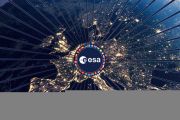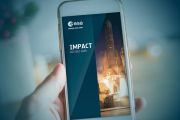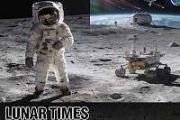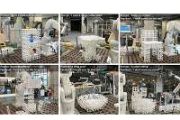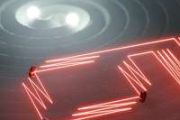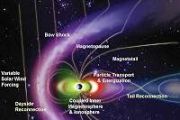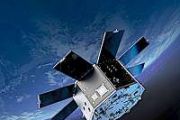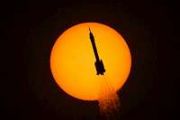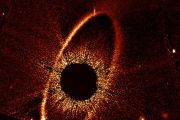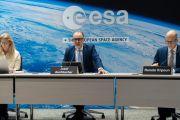
Copernical Team
China space station crew returns to Earth after 6 months in space
This request seems a bit unusual, so we need to confirm that you're human. Please press and hold the button until it turns completely green. Thank you for your cooperation!
Press and hold the button
If you believe this is an error, please contact our support team.
185.132.36.159 : 551c4c72-d550-4f95-accd-448a39ab
Japan launches a defense satellite carried by a new flagship H3 rocket
This request seems a bit unusual, so we need to confirm that you're human. Please press and hold the button until it turns completely green. Thank you for your cooperation!
Press and hold the button
If you believe this is an error, please contact our support team.
185.132.36.159 : 696125d9-d470-4f3c-8591-214d169d
Satcube secures new terminal order from Airbus Defence and Space
 Satcube, a European tech company specializing in lightweight satellite terminals for high-speed connectivity, has announced a significant new order from Airbus Defence and Space, valued at 1 million EUR. This order reinforces the ongoing partnership between the two companies, which began in 2020, and highlights Satcube's growing influence in satellite broadband solutions.
The expanding par
Satcube, a European tech company specializing in lightweight satellite terminals for high-speed connectivity, has announced a significant new order from Airbus Defence and Space, valued at 1 million EUR. This order reinforces the ongoing partnership between the two companies, which began in 2020, and highlights Satcube's growing influence in satellite broadband solutions.
The expanding par Successful demo showcases BAE Systems' next-gen M-Code GNSS technology
 BAE Systems has completed a successful demonstration of its latest M-Code signal tracking technology, using an Increment 2 Global Navigation Satellite System (GNSS) receiver built on the company's advanced Next-Generation Application Specific Integrated Circuit (ASIC).
his achievement is part of the Military GPS User Equipment (MGUE) Increment 2 Miniature Serial Interface (MSI) initiative,
BAE Systems has completed a successful demonstration of its latest M-Code signal tracking technology, using an Increment 2 Global Navigation Satellite System (GNSS) receiver built on the company's advanced Next-Generation Application Specific Integrated Circuit (ASIC).
his achievement is part of the Military GPS User Equipment (MGUE) Increment 2 Miniature Serial Interface (MSI) initiative, First Commercial Deep Space Spectrum License Awarded by FCC to AstroForge
 AstroForge has achieved a landmark moment in commercial space exploration, becoming the first private company to secure a license from the Federal Communications Commission (FCC) for deep space operations.
This authorization covers missions beyond 2 million kilometers from Earth, as defined by the International Telecommunications Union. The approval allows AstroForge's Odin spacecraft to u
AstroForge has achieved a landmark moment in commercial space exploration, becoming the first private company to secure a license from the Federal Communications Commission (FCC) for deep space operations.
This authorization covers missions beyond 2 million kilometers from Earth, as defined by the International Telecommunications Union. The approval allows AstroForge's Odin spacecraft to u Southern Launch fully approved for Whalers Way rocket pad in South Australia
 Leading Australian spaceport provider Southern Launch has received full approvals for the Whalers Way Orbital Launch Complex, located on the Eyre Peninsula in South Australia. Construction of permanent facilities will now move forward, with the first launches planned for late 2025.
Southern Launch CEO Lloyd Damp emphasized the importance of access to space, noting, "Access to space is crit
Leading Australian spaceport provider Southern Launch has received full approvals for the Whalers Way Orbital Launch Complex, located on the Eyre Peninsula in South Australia. Construction of permanent facilities will now move forward, with the first launches planned for late 2025.
Southern Launch CEO Lloyd Damp emphasized the importance of access to space, noting, "Access to space is crit Shenzhou 18 crew back in China after 6-month mission to Tiangong station
 The Shenzhou 18 mission crew safely returned to Earth early Monday, completing a six-month mission aboard the Tiangong space station. The three-member crew, led by mission commander Senior Colonel Ye Guangfu, along with Lieutenant Colonels Li Cong and Li Guangsu, touched down at 1:24 am local time at the Dongfeng Landing Site, situated in the Gobi Desert within Inner Mongolia. Their return journ
The Shenzhou 18 mission crew safely returned to Earth early Monday, completing a six-month mission aboard the Tiangong space station. The three-member crew, led by mission commander Senior Colonel Ye Guangfu, along with Lieutenant Colonels Li Cong and Li Guangsu, touched down at 1:24 am local time at the Dongfeng Landing Site, situated in the Gobi Desert within Inner Mongolia. Their return journ The Taurid meteor showers peak a week apart in November
This request seems a bit unusual, so we need to confirm that you're human. Please press and hold the button until it turns completely green. Thank you for your cooperation!
Press and hold the button
If you believe this is an error, please contact our support team.
185.132.36.159 : c65feb9f-5533-4cc1-b0dc-15f6ad67
Chinese space station crew returns after six months in orbit
This request seems a bit unusual, so we need to confirm that you're human. Please press and hold the button until it turns completely green. Thank you for your cooperation!
Press and hold the button
If you believe this is an error, please contact our support team.
185.132.36.159 : 551c4c72-d550-4f95-accd-448a39ab
Dragon Freedom Prepares for Short Relocation Ahead of Cargo Mission
 Four Expedition 72 crew members are gearing up for a brief ride to relocate the International Space Station's Dragon Freedom spacecraft this weekend, creating space for an upcoming cargo mission. The crew has also spent the week conducting life science research and performing maintenance tasks aboard the orbiting laboratory.
NASA astronaut Nick Hague and Roscosmos cosmonaut Aleksandr Gorbu
Four Expedition 72 crew members are gearing up for a brief ride to relocate the International Space Station's Dragon Freedom spacecraft this weekend, creating space for an upcoming cargo mission. The crew has also spent the week conducting life science research and performing maintenance tasks aboard the orbiting laboratory.
NASA astronaut Nick Hague and Roscosmos cosmonaut Aleksandr Gorbu 






